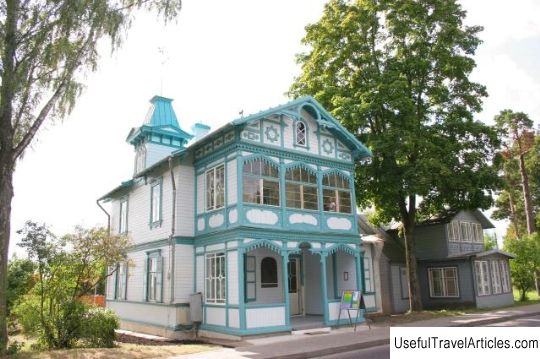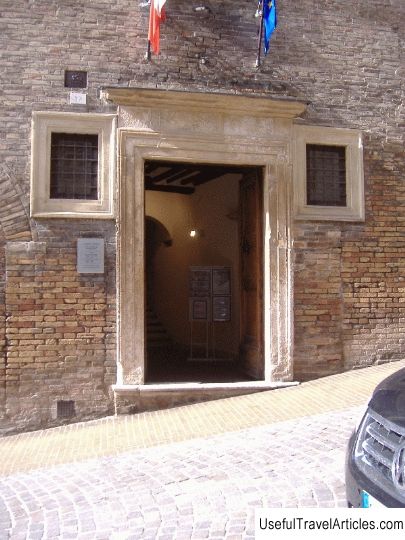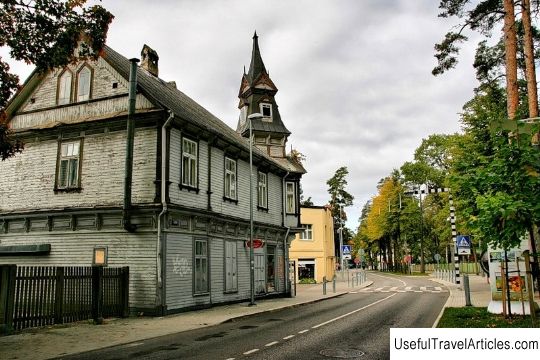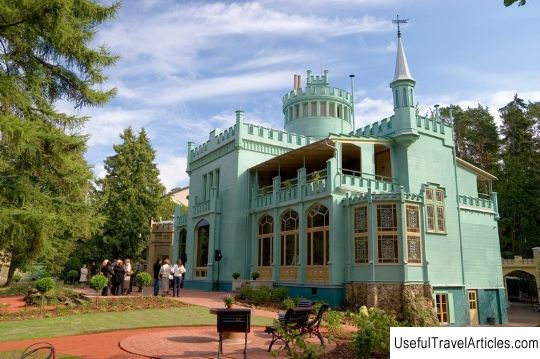House of Aspazijas (Aspazijas maja) description and photos - Latvia: Jurmala
Rating: 8,9/10 (6546 votes) 
House of Aspazijas (Aspazijas maja) description and photo - Latvia: Jurmala. Detailed information about the attraction. Description, photographs and a map showing the nearest significant objects. The title in English is Aspazijas maja. Photo and descriptionHouse of Aspazia is a small wooden two-story building with a light blue, almost white, facade, which is decorated with azure carvings. The house is located in the town of Dubulti (Jurmala district). There are enough such buildings here. Since the beginning of the 19th century they have been building the dacha coast. The owner of the house - Johanna Emilia Lisette Rosenberg, married Elza Pliekshane, went down in the history of Latvian and world poetry under the pseudonym Aspazija. She was born on March 04 (16) in 1868 in the Dauknas farm of the Zalenieki volost. Aspazija was the wife and faithful companion of the Latvian poet, public figure and playwright Jan Rainis (Pliekshan). She was his direct secretary, the strictest critic, and, of course, a muse. Aspazia had an extraordinary talent for poetry, prose writer and playwright. When she met Janis Pliekshan (editor of the newspaper Dienas Lapa) in 1894, she had already written plays that were shown on the stage of the Riga Latvian Theater. The works brought success and recognition to Aspazia. But, at the same time, she was fired from the theater. Play " Lost Rights " had an overly accusatory orientation. In it, Aspazia criticizes morality in society and directly calls on women to fight for their rights on an equal basis with men. For a long time Janis could not decide to read his poems to the chosen one. But soon she will express her opinion. “I reread your last poems and admire them, everything you have written is original, extremely original. This is not the blindness of love, you are familiar with my harsh criticism. I am convinced of your talent. I will keep my word and help you grow the way you helped me. ” Thus, the inspired Janis Pliekshan becomes the poet Rainis. For the first time, his poems under such a pseudonym will be published on November 1, 1895. Rainis has always opposed inequality in the social strata of society, was subjected to repression by the authorities. In 1897, Aspazia wrote to her lover in prison: `` My beloved, dear! I would give my freedom a thousand times, if only I was imprisoned with you. A sip of water and a dry crust is all I need. ” Having got married, they will live happily ever after. But many trials will befall Aspazia. With her husband, she will go through long exile, through the test of exile and further - world fame and recognition. Aspasia will create great poems, but it will irrevocably remain in secondary roles. The fame of her husband will not allow her own talent to be fully revealed. After the death of her husband, the poetess acquired this house in 1933. She moved here from Riga to Dubulti. For the last 10 years of her life, Aspazia lived in this house not alone, but together with her devoted housekeeper Annushka - practically a member of the family. Creative people gathered in the house, recited poetry, and played music. But in the last 3 years of her life, she was very lonely. Aspazia dies on November 05 in 1943. After the death of Aspazia, the house will gradually degenerate. It will become the property of the local government. Gradually, household items and furniture will begin to disappear from it. Every summer, temporary residents will be accommodated in it, who will not be interested in either the history of the house or its protection. Once the house of Aspazija was the most beautiful building, but now it has lost its beauty and neatness. Fortunately, in 1990, at the suggestion of the intelligent people of Latvia, the house of Aspazija will begin to be reconstructed. This will be done by people who admire the talent of the poetess. They, according to the stories of witnesses and the photographs found, will choose furniture for the house, restore its interior decoration. And again the house began to live its former life, as if the hostess did not leave it. He again became well-groomed and beautiful. Once inside, you plunge into that wonderful time, and you forget about the present. Tourists are attracted by the cozy atmosphere of the house, excursions accompanied by drinking tea. Here poems of Aspazia are read in the language of visitors. Nice music sounds. In a large room with no furniture, located on the ground floor, exhibitions of paintings, photographs, sculptures are held. This room can accommodate about 50 people. And on the street in front of the house there is a snow-white monument to Aspazia. It was created by the famous sculptor Arta Dumpe. The Aspazija House Museum is one of the most beautiful and interesting memorial museums in Latvia.      Topic: House of Aspazijas (Aspazijas maja) description and photos - Latvia: Jurmala. |




